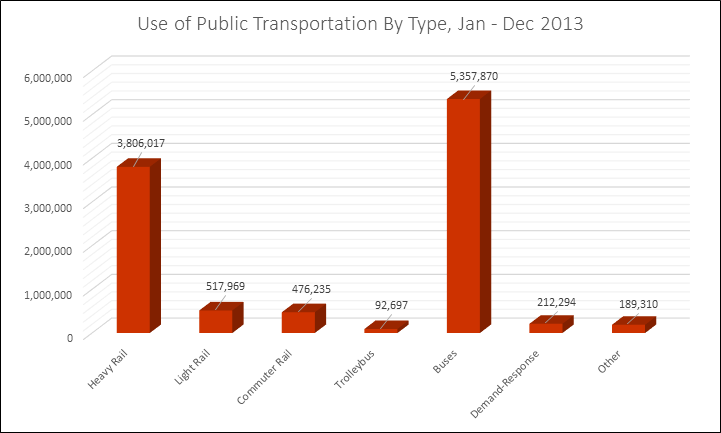Younger Americans in 2013 helped boost public transit ridership to a 57-year high with more trips on subways and commuter trains, even as bus rides decreased.
An annual report from the American Public Transportation Association found that the usage rate per capita increased last year as U.S. residents took 10.7 billion trips on transit systems, the most since 1956. Cities with the biggest gains included New York, Los Angeles, and Oakland.
Related: The Coming Price Increase That Can Break Your Budget
While the report doesn’t break down ridership by demographics, population growth coupled with more young people moving to cities certainly contributed to the annual increase, according to Art Guzzetti, vice president for policy at APTA. He said many among the 78 million millennials are thrifty and share this ethos: “I’ll drive a car if that’s the best deal, but I’ll take public transportation if that’s the best deal.”
He added that public transportation is no longer viewed as a social safety net. Transit rides since 1995 have outpaced population growth, which is up 20.3 percent, according to the study. Ridership rose by 37.2 percent during that same period.

“Another reason behind the ridership increases is the economic recovery in certain areas,” APTA President Michael Melaniphy said in a statement. “When more people are employed, public transportation ridership increases since nearly 60 percent of the trips taken on public transportation are for work commutes.”
Slideshow: The Surprising Reason College Grads Can’t Get a Job
At the same time, America’s love affair with the automobile isn’t quite yet in decline, according to the study. Vehicle miles traveled increased 0.3 percent last year and are up 22.7 percent since 1995.
Last year’s small increase is supported by a separate report from U.S. Public Interest Research Group and Frontier Group that says the nation’s 60-year driving boom has come to an end, primarily because millennials are shifting away from life with a car and baby boomers are ageing out of their “peak driving” years.
Besides trolley use, bus ridership was the only means of public transportation to show a decline last year. Ridership in cities with less than 100,000 residents increased 3.8 percent last year. At the same time, bus use in cities with more than half a million residents declined, dragging down overall bus ridership nationwide.
The figures also looked at public transportation in Canada, where transit rides declined last year.
Top Reads from The Fiscal Times:





